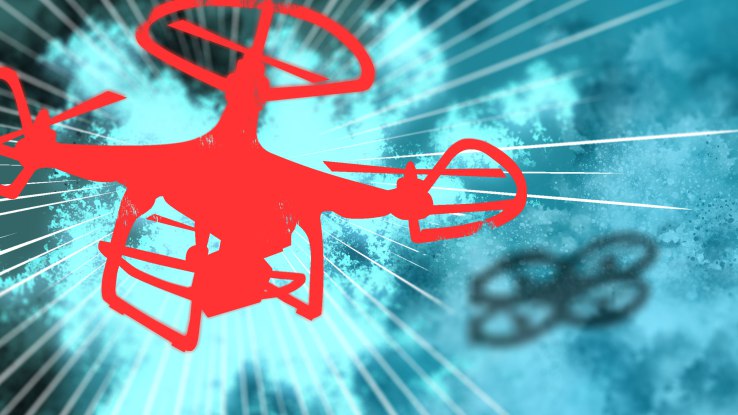

Most people associate drones with troops and mad scientists tinkering around in their backyards.
Thanks to technological breakthroughs — including longer and safer flights — and new federal guidelines enacted this year, drone use is expanding beyond military and consumer markets and is seeping into the enterprise. Analysts at PwC forecast the emerging global market for drone-powered business services to be valued at more than $127 billion.
DJI has ushered technical innovation into the mainstream with its popular Phantom series of off-the-shelf drones. The newest models now have enhanced gyro-stabilization capabilities and the ability to fly for triple the duration of what was possible only a couple of years ago — at a digestible cost of $1,000.
Simply put, the cost and hardware have reached a point where drones are easily accessible for most enterprise use cases. The tipping point, however, came with the Federal Aviation Administration’s decision to pass Part 107 in June — now, anyone with an online certification can operate a drone for commercial purposes. Previously, the industry was limited to having individuals with a pilot’s license operate drones (both costly and cumbersome).
We’re seeing a wide range of mainstream business applications for drones crop up, the breadth so esoteric it becomes hard to track. Intel just unveiled a drone designed specifically for industrial use-cases like construction site and field inspections. Oil and gas companies are using drones for rig safety and maintenance, and Amazon has made its aspirations for drone deliveries known.
Seed companies marketing to the agriculture industry are giving farmers free drones and training them to survey their crops. UPS recently used a drone to deliver medicine to an island near Boston. I also recently spoke with a company that mapped whole swathes of freeway in Mexico to identify sections that needed the most repair. Resolution was not high enough with satellite imagery and car-based mapping would have taken too long, but drones completed the project in a matter of days.
Drones are making a real impact on a number of industries, and quietly transforming the enterprise as we know it.
There are a ton of niche applications too — from insurers assessing hail storm damage on crops to cities surveying storm water drains.
The new enterprise drone market has created the need for an ecosystem to support it. On-demand “drone entrepreneurs” are working as consultants to companies that need drone pilots and service providers — think Uber for drones. For example, companies are contracting with drone operators for remote facility inspection rather than risking the safety of an employee or hiring a specialist solely for the assignment.
This cottage industry of drone specialists will be essential to the viability of the enterprise drone market. Nobody has yet aggregated the number of these service providers, but I have no doubt it is already in the tens of thousands.
Early on, off-the-shelf hardware solutions from producers such as DJI weren’t enterprise-ready (as highlighted above). Therefore, first-mover enterprise vendors such as Airware and Kespry built their own hardware in addition to the software ecosystem. This is shifting. More recently, the biggest development in the drone market is companies like DroneDeploy, Skycatch and Propeller, which are only focused on software.
These companies benefit from having to only focus on the software and the growing surrounding ecosystem of many software vendors. I expect a trend to play out similar to the commoditization of hardware within the smartphone industry — engineering your own drone hardware will rarely be worthwhile. A few promising categories for the next wave of enterprise drone software are for managing drone flight and managing drone behavior and compliance, as well as real-time data analytics processing.
The media likes to tell a futuristic story of drones whizzing through our cities, clouding our skies. While not unrealistic, this reality is quite a ways out. Less talked about is how millions of drones are already in use, the value that they’re creating in the enterprise and the outcomes they’re opening up that were previously cost-prohibitive or impossible.
Drones are making a real impact on a number of industries, and quietly transforming the enterprise as we know it. Much like personal IP-based telephony quietly became ubiquitous overnight, the tailwinds are such that we will soon see drones in every aspect of our lives.
Featured Image: Bryce Durbin

